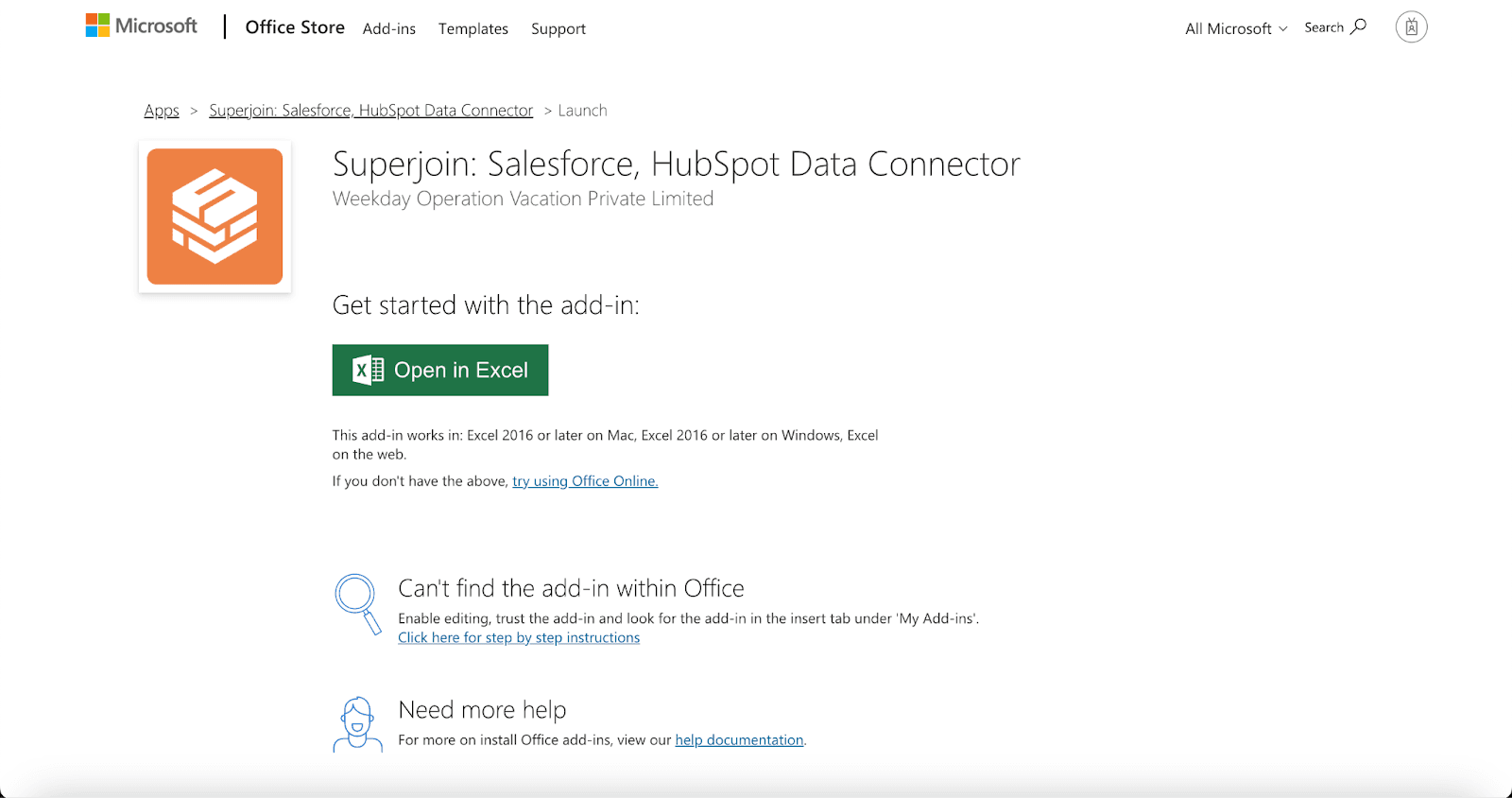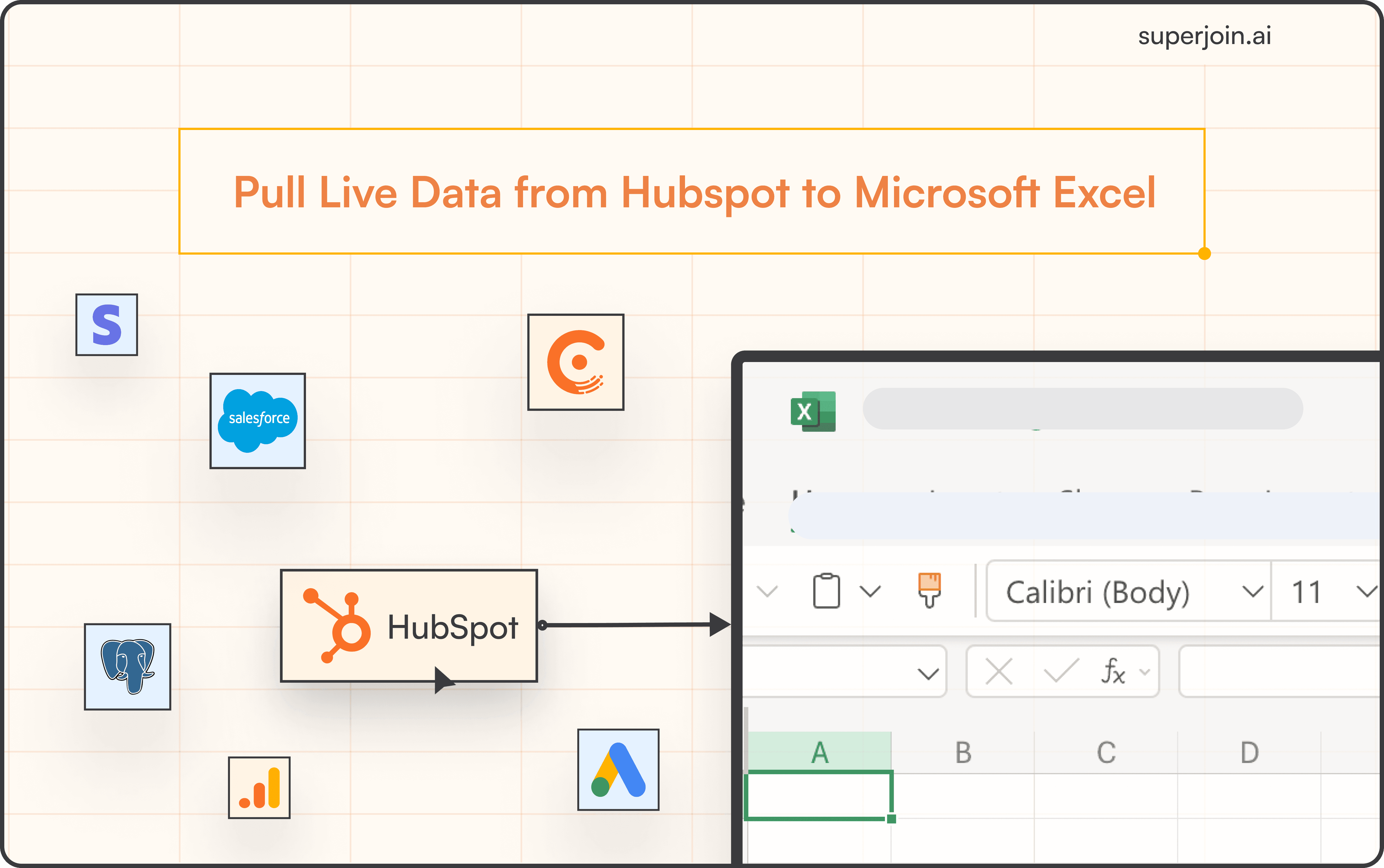Product
How to Connect Snowflake to Microsoft Excel
Easily connect Snowflake to Microsoft Excel to sync your data automatically for seamless analysis and reporting.



Snowflake is a cloud-based data warehouse platform widely used by businesses to store and manage large volumes of data. It excels in handling complex queries and data-intensive operations, making it a popular choice across industries for robust data management.
Connecting Snowflake to Microsoft Excel allows users to leverage Snowflake's powerful data warehousing capabilities within Excel's familiar spreadsheet environment. This integration, facilitated by tools like Superjoin, enables users to access, analyze, and report Snowflake data directly in Excel without requiring advanced technical skills. It bridges the gap between complex data storage and accessible data manipulation.
This guide compares different methods for connecting Snowflake to Excel, highlighting why Superjoin is often the best choice for many users.
Methods to Connect Snowflake to Excel
Method 1: Using Superjoin
Superjoin provides the fastest and easiest way to connect Snowflake to Excel without any technical know-how or complex setup processes. Here’s how it works:
Step 1: Open this link, click on Get it now.

Step 2: Once installed, click on Open in Excel or Try using it online (for Excel online).

Step 3: Launch Superjoin by opening the add-in and clicking on Open Sidebar. Login with your Microsoft account to start using Superjoin.

Step 4: From Sources, select Snowflake from the list.

Step 5: After selecting Snowflake, authorize Superjoin to access your connection details.

Step 6: After authorization, you'll see a list of your Snowflake properties in the Data Preview Window.
Choose your property and view, then click "Import" to bring the data into Excel.

Voila, you've successfully imported your Snowflake data to Excel using Superjoin!
It is particularly suitable for users looking for a Snowflake to Excel Sheets free tool, as Superjoin offers a free tier.
Method 2: Export Data Manually via CSV
Export Snowflake data to CSV and manually import it to Excel, here’s how you can use it to connect Snowflake to Excel:
Export Data: Use Snowflake's Snowsql command line tool to run a query and export the data to a CSV file.
Command: snowsql -q "SELECT * FROM <database>.<schema>.<table>" -o output_file.csv
Upload CSV: Open Excel, click on "File," select "Import," and upload the CSV file.
Why Choose Superjoin?
In comparison with other methods, Superjoin stands out due to its:
User-Friendly Interface: Designed for non-technical users such as business analysts and marketers.
Time Efficiency: Enables quick data import without manual file handling.
Automated Updates: Keeps your data synchronized with real-time changes in Snowflake.
Integrated Experience: Operates entirely within Excel, ensuring seamless workflows.
For those seeking a simple yet powerful solution for integrating Snowflake with Excel, Superjoin minimizes technical barriers while maximizing efficiency, making it an excellent choice for most users.
Say Goodbye to Tedious Data Exports! 🚀
Are you tired of spending hours manually exporting CSVs from different tools and importing them into Microsoft Excel?
Superjoin is a data connector for Microsoft Excel & Google Sheets that connects your favorite SaaS tools to Microsoft Excel automatically. You can get data from these platforms into Microsoft Excel automatically to build reports that update automatically.
Bid farewell to tedious exports and repetitive tasks. With Superjoin, you can add one additional day to your week. Try Superjoin for free or schedule a demo.
Snowflake is a cloud-based data warehouse platform widely used by businesses to store and manage large volumes of data. It excels in handling complex queries and data-intensive operations, making it a popular choice across industries for robust data management.
Connecting Snowflake to Microsoft Excel allows users to leverage Snowflake's powerful data warehousing capabilities within Excel's familiar spreadsheet environment. This integration, facilitated by tools like Superjoin, enables users to access, analyze, and report Snowflake data directly in Excel without requiring advanced technical skills. It bridges the gap between complex data storage and accessible data manipulation.
This guide compares different methods for connecting Snowflake to Excel, highlighting why Superjoin is often the best choice for many users.
Methods to Connect Snowflake to Excel
Method 1: Using Superjoin
Superjoin provides the fastest and easiest way to connect Snowflake to Excel without any technical know-how or complex setup processes. Here’s how it works:
Step 1: Open this link, click on Get it now.

Step 2: Once installed, click on Open in Excel or Try using it online (for Excel online).

Step 3: Launch Superjoin by opening the add-in and clicking on Open Sidebar. Login with your Microsoft account to start using Superjoin.

Step 4: From Sources, select Snowflake from the list.

Step 5: After selecting Snowflake, authorize Superjoin to access your connection details.

Step 6: After authorization, you'll see a list of your Snowflake properties in the Data Preview Window.
Choose your property and view, then click "Import" to bring the data into Excel.

Voila, you've successfully imported your Snowflake data to Excel using Superjoin!
It is particularly suitable for users looking for a Snowflake to Excel Sheets free tool, as Superjoin offers a free tier.
Method 2: Export Data Manually via CSV
Export Snowflake data to CSV and manually import it to Excel, here’s how you can use it to connect Snowflake to Excel:
Export Data: Use Snowflake's Snowsql command line tool to run a query and export the data to a CSV file.
Command: snowsql -q "SELECT * FROM <database>.<schema>.<table>" -o output_file.csv
Upload CSV: Open Excel, click on "File," select "Import," and upload the CSV file.
Why Choose Superjoin?
In comparison with other methods, Superjoin stands out due to its:
User-Friendly Interface: Designed for non-technical users such as business analysts and marketers.
Time Efficiency: Enables quick data import without manual file handling.
Automated Updates: Keeps your data synchronized with real-time changes in Snowflake.
Integrated Experience: Operates entirely within Excel, ensuring seamless workflows.
For those seeking a simple yet powerful solution for integrating Snowflake with Excel, Superjoin minimizes technical barriers while maximizing efficiency, making it an excellent choice for most users.
Say Goodbye to Tedious Data Exports! 🚀
Are you tired of spending hours manually exporting CSVs from different tools and importing them into Microsoft Excel?
Superjoin is a data connector for Microsoft Excel & Google Sheets that connects your favorite SaaS tools to Microsoft Excel automatically. You can get data from these platforms into Microsoft Excel automatically to build reports that update automatically.
Bid farewell to tedious exports and repetitive tasks. With Superjoin, you can add one additional day to your week. Try Superjoin for free or schedule a demo.
FAQs
Can I use Superjoin for other data sources besides Snowflake?
Can I use Superjoin for other data sources besides Snowflake?
Is there a limit to the amount of data I can import using Superjoin?
Is there a limit to the amount of data I can import using Superjoin?
How frequently can I schedule data updates in Superjoin?
How frequently can I schedule data updates in Superjoin?
Automatic Data Pulls
Visual Data Preview
Set Alerts
other related blogs
Try it now

